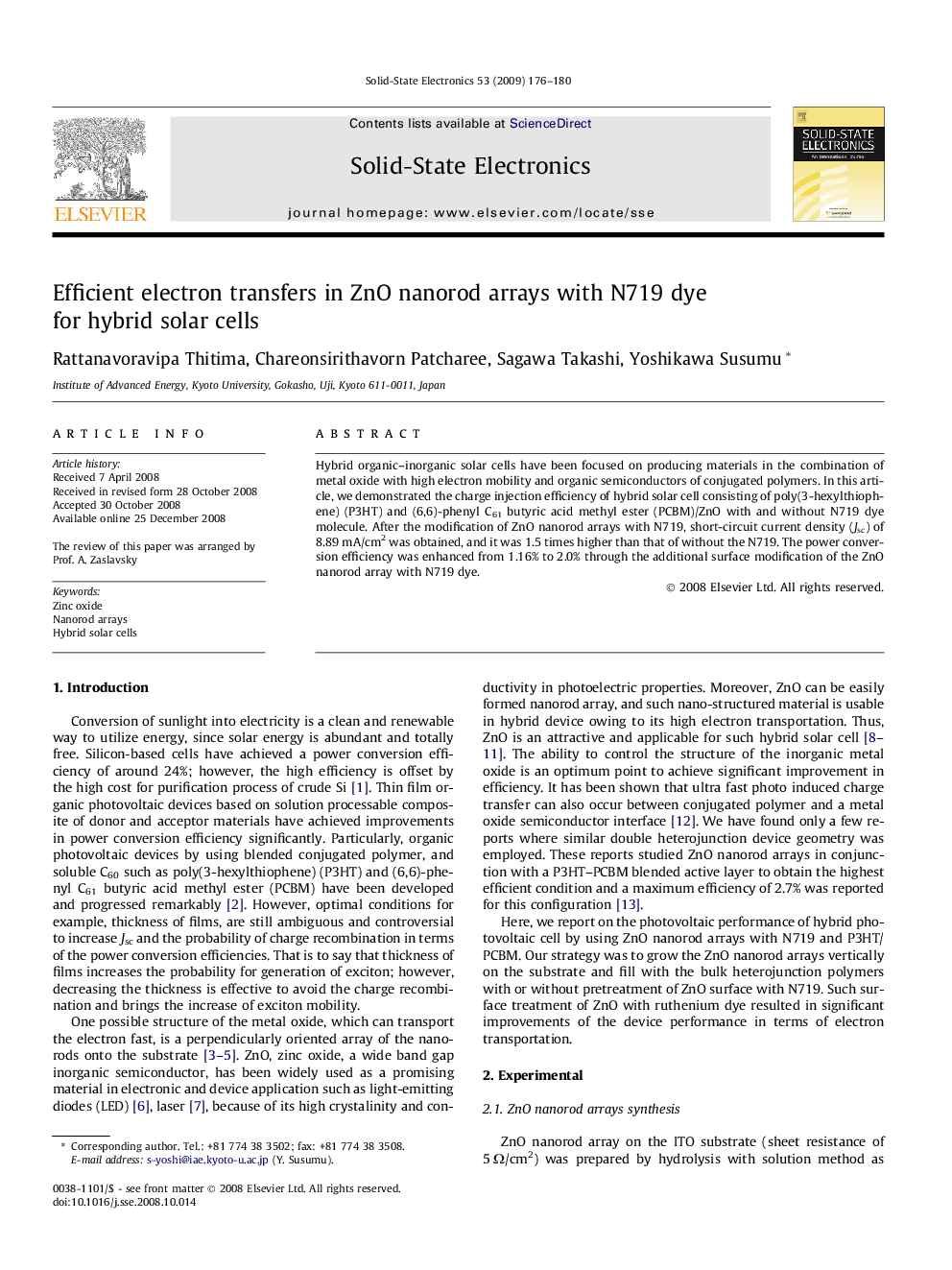| Article ID | Journal | Published Year | Pages | File Type |
|---|---|---|---|---|
| 748904 | Solid-State Electronics | 2009 | 5 Pages |
Abstract
Hybrid organic–inorganic solar cells have been focused on producing materials in the combination of metal oxide with high electron mobility and organic semiconductors of conjugated polymers. In this article, we demonstrated the charge injection efficiency of hybrid solar cell consisting of poly(3-hexylthiophene) (P3HT) and (6,6)-phenyl C61 butyric acid methyl ester (PCBM)/ZnO with and without N719 dye molecule. After the modification of ZnO nanorod arrays with N719, short-circuit current density (Jsc) of 8.89 mA/cm2 was obtained, and it was 1.5 times higher than that of without the N719. The power conversion efficiency was enhanced from 1.16% to 2.0% through the additional surface modification of the ZnO nanorod array with N719 dye.
Related Topics
Physical Sciences and Engineering
Engineering
Electrical and Electronic Engineering
Authors
Rattanavoravipa Thitima, Chareonsirithavorn Patcharee, Sagawa Takashi, Yoshikawa Susumu,
